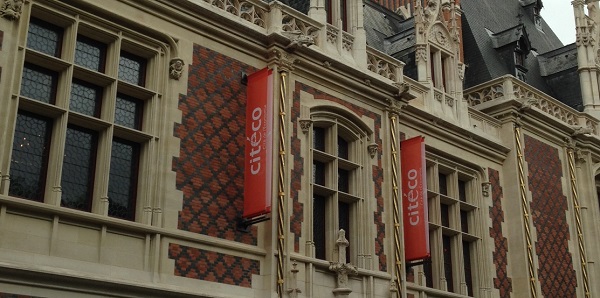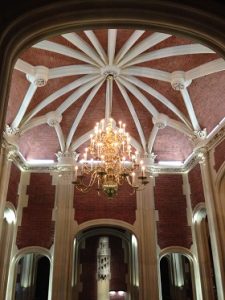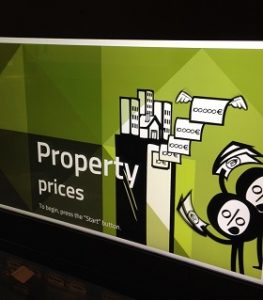
While a museum dedicated to the economy may sound geeky from the get-go, the hi-tech Citéco in a faux-Renaissance palazzo near the Parc Monceau is a whole lot of fun.
For fans of architecture in both its purest and kitschiest forms the fun begins with the exterior façade. In 1878, richissime banker Emile Gaillard hired up-and-coming architect Jules Février to build a Parisian mansion modeled on the late 15th-century features of the Château de Blois in the Loire Valley. The Monceau quarter was favored terrain of the banking class at the time—the Rothschilds, the Camondos, the Perrières and others also built mansions in the area—and is still home to many golden boys and girls.
 Ironically, the Hôtel Gaillard is a picture-perfect illustration of a real estate fiasco in fiscal terms: It took six years and 11 million francs to build but the Banque de France was able to scoop it up in 1919 for a mere two million. That change of hands merely ratcheted up the site’s eclectic charm since the Banque de France augmented the already over-the-top décor with the Art Nouveau and Art Deco elements popular in its day. However, for some delightfully curious reason, the directors went all medieval when they decided to protect the safety deposit vault with a moat.
Ironically, the Hôtel Gaillard is a picture-perfect illustration of a real estate fiasco in fiscal terms: It took six years and 11 million francs to build but the Banque de France was able to scoop it up in 1919 for a mere two million. That change of hands merely ratcheted up the site’s eclectic charm since the Banque de France augmented the already over-the-top décor with the Art Nouveau and Art Deco elements popular in its day. However, for some delightfully curious reason, the directors went all medieval when they decided to protect the safety deposit vault with a moat.
Yes, they dug an actual moat and filled it with water. (BTW, not a single break-in before the bank closed its door to private customers in 2006.) Today’s visitors can walk over the (now-tiled) drawbridge that led over the moat to the coffers.
While the museum’s “function’ is devoted to economics, it’s not macro and micro economics in its stuffiest, textbook form.
Citéco is all about the money: how it’s made, lost, spent, printed, squandered, stolen or saved. All exhibits are well translated in English and Spanish.
Displays showcase currency made from silver, gold, bone seashells, and intricately braided raffia. A home-made, home-grown toaster constructed by British artist Thomas Thwaites (nine months to assemble; nine seconds to melt down) illustrates the need to trade in both skills and materials.
 Interactive exhibits make economics even more personal. A bank-balance game flashes a monthly salary, then fast-forwards through possible expenses. Pull a lever to evade the exorbitant 150 € cable/internet charge and the screen politely reminds you that you signed a monthly contract.
Interactive exhibits make economics even more personal. A bank-balance game flashes a monthly salary, then fast-forwards through possible expenses. Pull a lever to evade the exorbitant 150 € cable/internet charge and the screen politely reminds you that you signed a monthly contract.
The 9-player boardroom game is a lesson in negotiation. Visitors can explore the domino theory with real dominoes, put a pair of jeans through a TSA-style radar check to trace its manufacture and materials, and even design their own paper money.
Don’t worry if you get a little seasick from the walk-in exhibit of the sub-prime crisis. It was specifically designed to make spectators feel queasy. Recover (or not?) by sitting in on an imaginary conversation with John Maynard Keynes and Milton Friedman.
Citéco: La Cité de l’Economie. 1 Place du Général Catroux, 17th arr. Metro Monceau or Malesherbes. Open Tuesday to Friday from 10 am to 6 pm; Saturday until 7 pm. Tickets: 12 € (general admission); 9 € (ages 18 – 25); 6 € (age 6 – 17); under 6 free. Happy Hour: 6 € from 4:30 pm Monday through Friday (except holidays); 8 € on the first Thursday of each month from 7 to 10 pm.
© 2019, Corinne LaBalme

